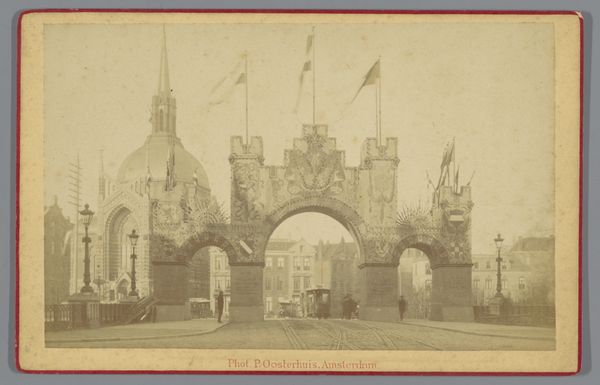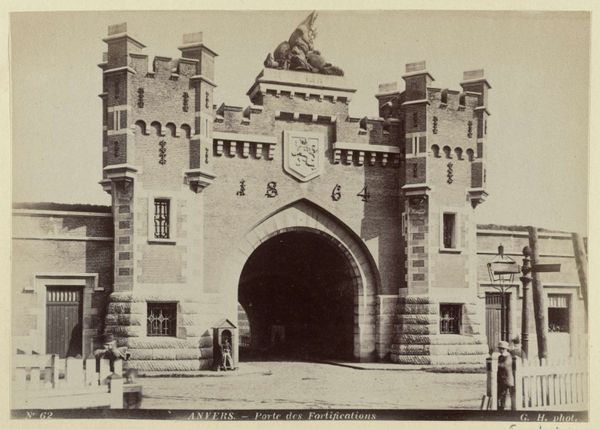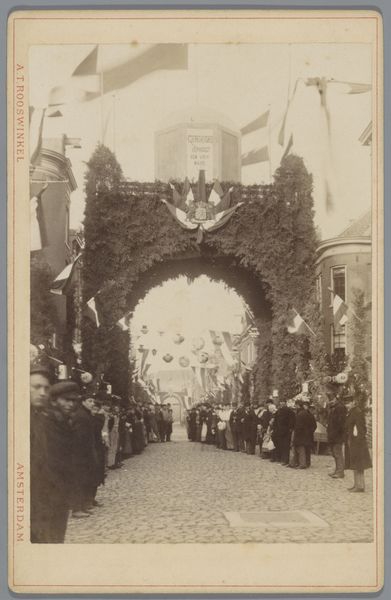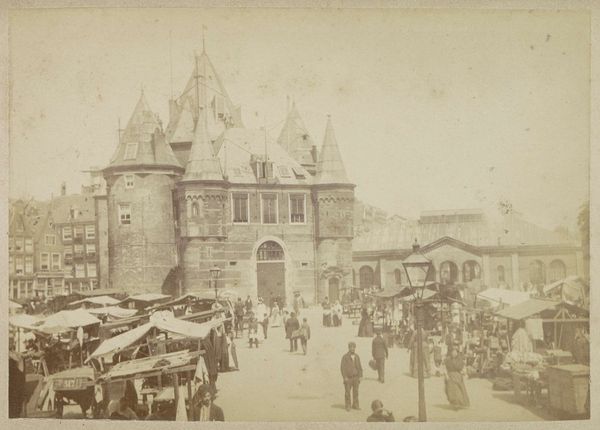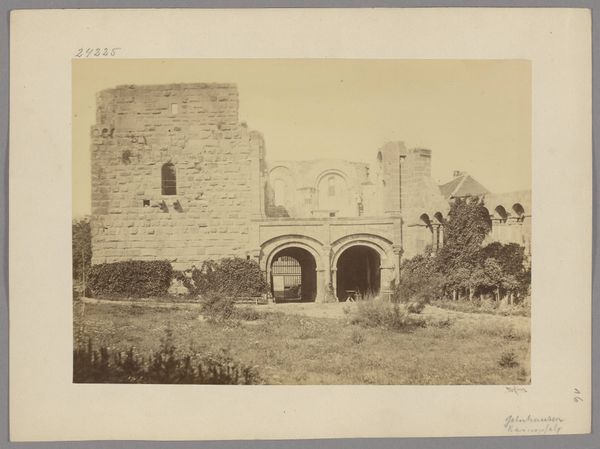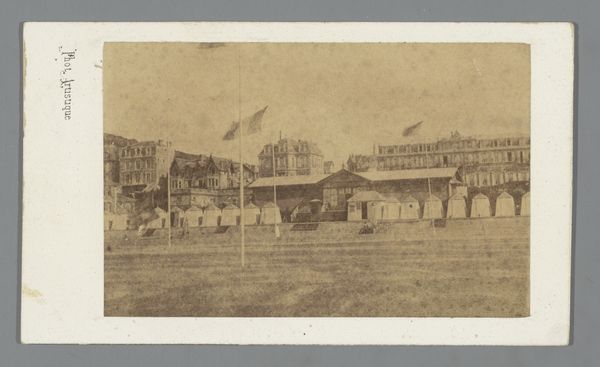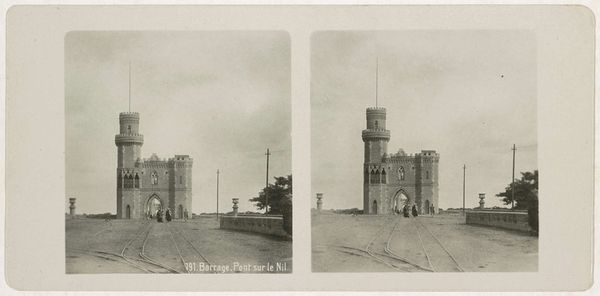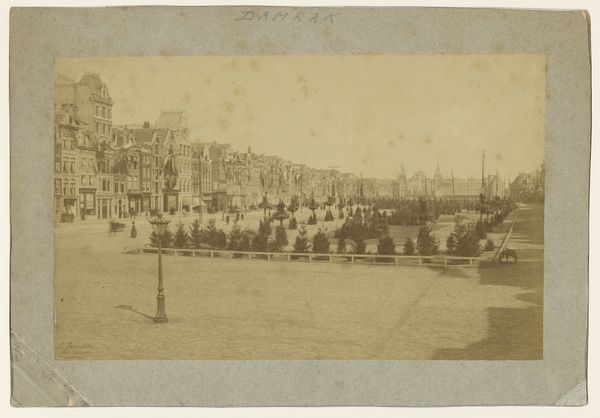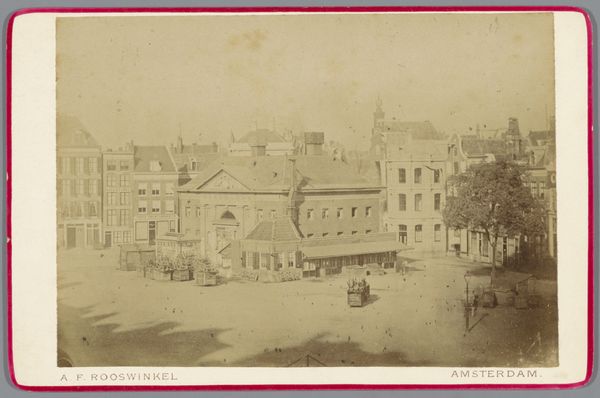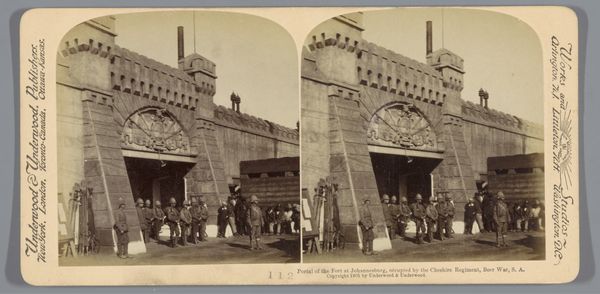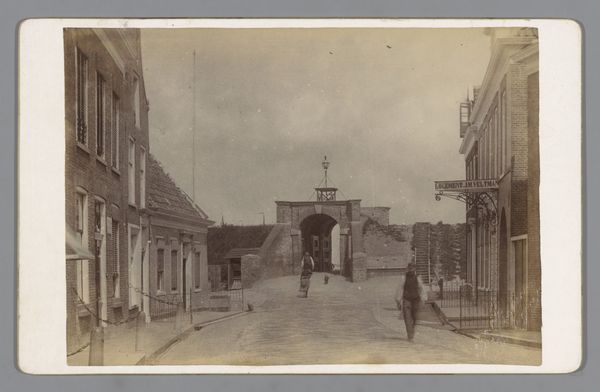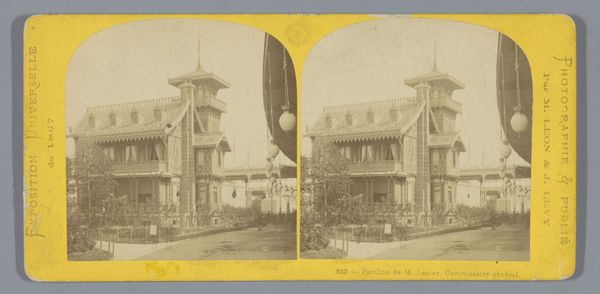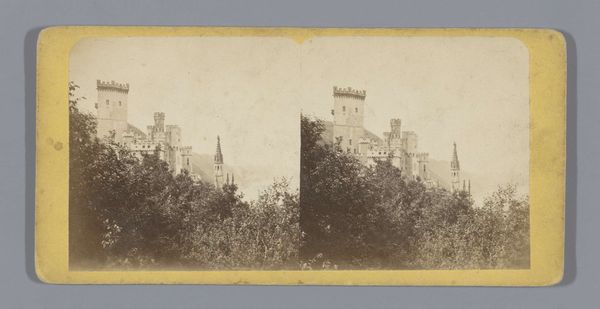
Decoraties op de Leidsebrug ter ere van de zeventigste verjaardag van Koning Willem III 1887
0:00
0:00
print, photography
# print
#
photography
#
photojournalism
#
coloured pencil
#
cityscape
#
realism
Dimensions: height 108 mm, width 167 mm
Copyright: Rijks Museum: Open Domain
Curator: Henri Frederic Oelrichs created this photographic print in 1887. It’s entitled “Decorations on the Leidse Bridge in Honor of King Willem III’s Seventieth Birthday," and it is held at the Rijksmuseum. Editor: My first thought is the sheer impressiveness of the decorations; they look almost like a fortified castle erected over a bridge. Curator: Absolutely. The photograph documents a moment of public spectacle, revealing how the monarchy used displays to reinforce its image, particularly at a time of evolving social dynamics. Consider the architectural structure – an ornate triumphal arch – set against the everyday cityscape. It tells a story of the public role of the monarchy, creating these grand urban interventions that momentarily transform ordinary spaces into arenas of celebration and national identity. Editor: For me, it's intriguing how the physical elements shape this narrative. Look closely, and you see that these arches aren't built of stone, but some form of scaffolding or temporary structure bedecked with ornamentation. It makes you consider who constructed it, the labor involved, and how temporary the structure ultimately was. The construction method hints at the transient nature of these displays of power. It speaks volumes about the practical aspects that uphold grand events like royal birthdays, doesn’t it? Curator: Certainly, those ephemeral materials challenge our notions of permanence, offering a subtle critique about constructed power. It's not merely about the monarchy’s ability to shape its own image, but the ability of people to shape urban spaces and craft public sentiment through design. It touches upon the politics inherent in such displays, underscoring how ephemeral they are and the resources used to bring these monumental events into reality. Editor: The photographic process also needs to be discussed. To think about photography itself, and the paper on which this image is printed is critical. Someone meticulously printed this photo, a physical act that brought this scene to others beyond the event itself. Each step in its production involved specific skill and time. We’re dealing with social conditions under which mass reproduction of imagery has only recently become easily accessible, which allows for unique insight and wider distribution of propaganda. Curator: You're right; this image freezes a specific, idealized portrayal in a quickly-changing world. Its dissemination through printed photos reinforces a desired representation of authority and cements public imagination regarding royal celebrations. It’s a window into the monarchy's ongoing negotiation with popular opinion through public image-making. Editor: Examining the work in terms of process and distribution adds a tangible aspect to something that risks seeming like simple celebration. Now, I look at this image with fresh eyes and think about the amount of labor to mount and dismount everything in that scene, capturing so much about society than merely just the celebrations. Curator: By looking at how historical contexts merge into a moment immortalized through images, the artwork helps unveil complexities in social and political eras. Editor: I see this piece with an acute understanding of human involvement behind even celebratory images. It brings awareness regarding materials utilized and their connection within that particular setting and historical moment.
Comments
No comments
Be the first to comment and join the conversation on the ultimate creative platform.
